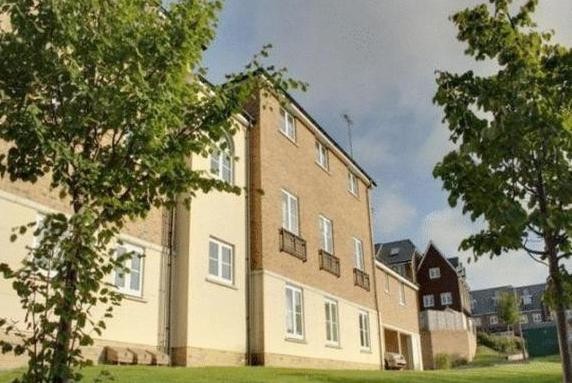
Jump to:
Rental yields by England and regions
Every month we are bombarded with a host of rental reports which cover what’s happening in the market, both nationally and regionally.
Some reports are produced monthly and others quarterly. Some cover the UK, while others cover just England and Wales. From working with rental indices, we know there are three levels of rental inflation:
The rental reports give us an insight into what is happening in the market and we comment on whether this is a general trend, something which is an anomaly or ‘one-off’ and particularly highlight the enormous regional differences.
We take a lot of time and effort to understand the strengths and weaknesses of the different indices and to make sure that when they give conflicting information or abnormally high increases and decreases, we attempt to explain why these large changes exist. For example:
Rental data from the North East
Having studied rents for many years not just via the indices but also by talking to local letting agents, we know rents for the region of the North East can fluctuate dramatically as monthly rents vary from just £300 per month to in excess of £3,000 a month. In addition, there is a large student influx, so a large proportion are HMOs, raising the average rents at different times of the year. As such, we tend to report, where possible, on individual areas and take large month-on-month fluctuations with a pinch of salt.
Large rises and falls
Typically, we know rents don’t fluctuate much from one month to the next and are capped by wage growth. As such, in the past, whenever we see large fluctuations, we investigate what’s causing it in case it’s a stats anomaly.
However, this changed in 2022. Newly let rents have been rising at double digits. This is partly due to wage rises of 6.5% YoY (Source: ONS) and now due to a huge shortage in properties to rent. This has been caused by landlords leaving the market, few new investors, especially due to the mortgage hikes and because of government policies. In contrast though, all rents, including existing rents from the ONS, show that overall rents are rising below inflation at 4.8% according to the ONS.
Rightmove
50,000 rental properties needed to bring supply back to pre-pandemic levels
“Average advertised rents outside of London rise to a new record of £1,291 per calendar month (pcm), though the pace of rent growth continues to slow, with average rents now 8.5% higher than last year.”
Hometrack
UK rental inflation lowest for 2 years
“UK rental inflation slows to +7.8%, a 2-year low.”
Homelet
Average monthly UK rent increases by 1.6%
“April 2024 saw another pick-up in rental growth, pushing average rents to a new high of £1,294 per month.”
Goodlord
April brings higher rents as year-on-year rises continues
“April 2024 rents up 6% year on year while void periods remain steady.”
Propertymark
Tenant demand decreases
“The average number of new prospective tenants registered per member branch provides an indication of market demand. Registrations decreased from 89 in February 2024 to 82 in March 2024 suggesting that demand is slowing.”
ONS
“Average UK private rents increased by 8.9% in the 12 months to April 2024 (provisional estimate), down from 9.2% in the 12 months to March 2024."
Tracking rents over the last few years has been very unusual. Historically, rents rise at around 2% per annum, but since the Pandemic, wages have risen and stock shortages are very tight in the rental sector, we have seen double digit rises in rents. Although, up until September last year, the increases were still in line with inflation rises, since then, inflation has come down, while rent rises have remained high.
Although they have fallen from double digit increases, they are still rising at historically high levels, even in excess of inflation and wage growth – the two typical influences on rents.
Download the full version of Kate Faulkner's Q1 2024 PRS report here
ONS Private Rented Sector Index
Source: ONS
Download the full version of Kate Faulkner's Q1 2024 PRS report here
Regional rent rises appear to be at their highest in the West Midlands, while London is showing the slowest growth, likely to be due to ‘caps’ on wage growth. Having said that, the data is conflicting as according to the government’s ONS data, London is seeing the largest rise.
Source: ONS
London was the English region with the highest rents inflation in the 12 months to April 2024, at 10.8%. This was down from the record-high annual rise of 11.2% in March 2024, which was the highest annual inflation since this series began in January 2006. London’s annual inflation rate slowed because average rent prices rose more slowly in April 2024 than they did a year earlier.
Rents annual inflation was lowest in the North East, at 5.8% in April 2024. This was down from the joint record-high annual rise of 6.1% in March 2024.
Goodlord
“The most significant month-on-month shift was recorded in the East Midlands, where rents were up by nearly 3% compared to March.
“Only two regions recorded a reduction in rents. With prices down by 1% in the West Midlands, and 0.15% in Great London.
“The highest rents are currently found in Greater London, at £1,951, and the lowest in the North East, at £863 per month.”
Hometrack
London leads the rent inflation slowdown
“London has recorded a sharp slowdown in rental inflation to just 5.1%, down from 15.3% a year ago. The balance between supply and demand has narrowed the most in London, with demand 30% lower than a year ago and available supply increasing by the same amount. High rents in London mean affordability constraints are compounding the scale of the slowdown in rent inflation.
“Across the rest of the UK, rental inflation is broadly in line with a year ago despite weaker demand. Rental inflation is starting to slow across all major cities but to a lesser degree than London.
“Rents continue to rise the fastest in Scotland (11.6%) - the only area where rental inflation remains in double digits. The rate of inflation has slowed modestly on cooler demand, mainly due to seasonal factors, but lower rents are less of a constraint on rental growth.”
There isn’t a huge amount of rental information on local data for towns and cities, except from Hometrack and the truly fantastic data provided in Scotland by Citylets – if only we had this kind of detail for England, Wales and Northern Ireland!
Source: Hometrack
The reality is although we talk a lot about a ‘housing crisis’ no-one really defines exactly what that crisis is. For me, it’s very much the failure to build social homes that defines the housing crisis. There are over 1 million households in the PRS that are renting on benefits, and it’s likely many of them are eligible for a social home. Due to the sale of nearly 2mn social homes, many who are on waiting lists have to rent in the PRS, some having to make up the difference between the rent they pay and the amount they are allowed to claim via Local Housing Allowance.
If those who were eligible for a social home had one, that would put back approximately 1mn homes into the PRS and the buying/selling sector.
So the current crisis in stock in the PRS is very much one driven by government policies, but interestingly, it’s a problem caused in Wales by a Labour led government, in England, by the Conservatives and in Scotland by the SNP.
Rightmove
“The rental market is still extremely busy, with nearly 50,000 rental properties needed to bring the supply of rental homes back to pre-pandemic levels:
Propertymark
“The average number of new prospective tenants registered per member branch provides an indication of market demand. Registrations decreased from 89 in February 2024 to 82 in March 2024 suggesting that demand is slowing. It is possible that ongoing legislative uncertainty and relatively high rents are contributing factors. Stock levels reflect the average number of properties that are available for rent at each member branch. Stock levels tend to fluctuate month on month, and although they increased in March 2024, they remain within established Parameters.”
Hometrack
Build to rent’ creates new city centre rental markets
“The growth in £1,000pcm areas is now expanding in regional markets outside the south of England as new city centre rental markets emerge. The rise of corporate and institutional investment in rented homes has led to the delivery of over 90,000 new ‘build to rent’ homes across the UK in recent years with more to come.
“House builders are also starting to sell homes to corporate landlords. We find that a fifth of rented homes in Scotland, the North West, East Midlands and West Midlands are now in areas over £1,000 pcm. No local markets had rents over £1,000pcm outside the south of England just 3 years ago. The North East is the only area with no markets over this level, while Yorkshire and the Humber has just 4%.”
Rental yields really need to be calculated by property type and by property let as yields for HMOs versus ASTs are very different.
However, these yield averages can be quite useful to compare your own investment properties too, and they are also useful to track whether they are going up or down, and finally, what yield to look for if you are thinking about purchasing a new buy to let in a specific region.
Paragon Bank
Average rental yields hit six-year high
Source: Rightmove
Source: Aldermore
The forecasts for rents is that they are unlikely to reduce anytime soon. The long term average rent rises are driven typically by wage growth. Currently, rents are rising higher than wages, so this can’t carry on for much longer and it’s likely they will fall back to 4-5% rises and then back to match wage growth.
Hometrack
Grow rental supply to improve rental affordability
“Looking ahead, we projected UK rental inflation would halve over 2024 to 5%. The consensus among economic forecasters is that the average earnings growth will slow to just below 4%. It means no immediate prospect that rental affordability will improve over 2024.
“A sustained expansion in available supply would drive a faster slowdown in rental inflation than we might expect. It’s likely to result in rents falling in some city centre locations. This may well happen in 2024 but not on a scale that would impact the headline growth rate. Ongoing low levels of net new investment means below average levels of rental supply are set to persist, supporting headline rental inflation.
“The clear conclusion is that the best way to improve affordability is to boost rental supply. More supply will continue to come from the new build sector, but the big needle mover would be more investment by private landlords. This is currently looking unlikely and further rationalization of landlord portfolios in the face of higher mortgage rates and growing regulation will offset any increase new investment in rental supply.”
Knight Frank
"In the lettings market, the normalisation of supply and demand has happened more quickly than we expected in January, which means we have cut our 2024 forecasts for prime London rents.
“We now expect average rental value growth to be 2% in prime central London this year (versus 5.5% in January) and 2.5% in prime outer London (versus 4.5%).
“Our rental forecasts between 2025 and 2028 have stayed largely the same or been increased slightly, which is also due to rising political uncertainty.
“Some form of Renters Reform Bill is likely to happen in the short-term, tipping the balance of power towards tenants. That is likely to keep supply in check and upwards pressure on rental values.
“Our lettings forecasts have also increased marginally for the UK and Greater London.
“Strong rental growth has been underpinned by a structural undersupply of rental housing, as well as a competitive jobs market, high immigration, and rising mortgage costs.
“At the same time supply levels, while showing some signs of improvement, remain tight. The latest RICS survey confirms that the gap between demand and supply in the rental market is still significant.
“It is unlikely that rental supply will increase in the next few years at a level that will materially impact headline rental growth,” said Oliver Knight, head of residential development research at Knight Frank. “Private landlords in the buy to let sector continue to feel the pinch from higher interest rates and changes to taxation which have resulted in some exiting the sector. Build to rent supply is increasing, but not fast enough to replace the BTL homes lost.”
“In the absence of meaningful government support for first-time buyers, higher interest rates will also keep tenants renting for longer, keeping overall rental demand high.”
| Making tax digital for landlords - LandlordStudio |
Storing your belongings - Big Yellow |
New build homes snagging - |
 |
 |
 |